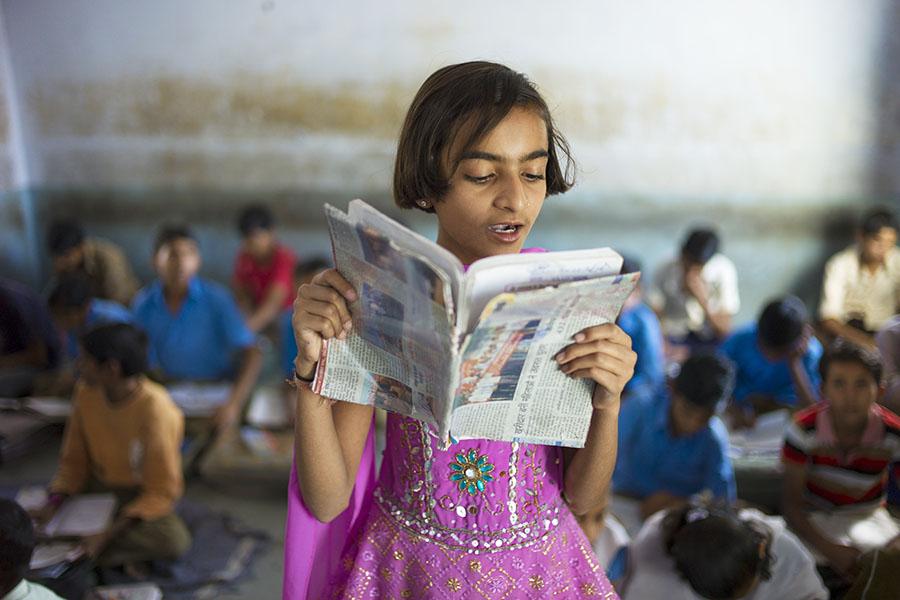How building school toilets can keep our girls in school
A clean and functioning toilet is still a right denied in rural India. This hurdle dwindles the number of girls in school because of the challenges it poses to their well-being. The social sector, corporate sector and the local administration must work together to solve this problem
Across the country, if one were to visit Anganwadis, one would see a healthy mix of little girls and boys taking their first steps towards a life of learning. Over time, unfortunately, the number of girls in the class dwindles owing to many socio-economic hurdles, and only the most persistent ones make it to the finish line. But receiving an education shouldn’t be made so challenging for anyone. If we want our children—specifically our girls—to go to school and stay in school, we must start by identifying the reasons why they drop out in the first place. Lack of toilets, among others, is one.
A clean, functional toilet is what many of us take for granted in an urban home and school. But it is a basic right denied to so many in India’s villages. A 2020 survey of 1,967 co-educational government schools found that 40 percent of toilets in these schools were either non-existent or simply unused. Close to 72 percent had no running water (2020 survey of the Comptroller and Auditor General of India (CAG). The lack of an efficient sanitation infrastructure directly impacts education, especially for girls. According to a report by Dasra, a strategic philanthropy organisation, titled Dignity for Her, “Girls tend to miss school six days a month on average due to the inability to manage their periods at school. This eventually contributes to almost 23 percent of girls dropping out of school on reaching puberty, which critically undermines their potential as individuals and future workers.” This is a worrying number for a country with a youth population like ours.
Also Read- Football: A social and gender tool empowering girls in rural India
Girls, especially menstruating girls, bear the brunt of the lack of sanitation infrastructure more than their male counterparts. In most remote villages, the women have to walk long distances into the field at odd hours to relieve themselves. The infrequency causes a strain on the bladder, making them prone to UTI (Urinary Tract Infections) and kidney problems. Sometimes to avoid taking the trek, women consume less water, leading to dehydration. Seeking isolated spots at odd hours to ensure privacy also means they are susceptible to snake attacks and, in some cases, abduction and sexual harassment.
Of course, the overall impact of lack of sanitation is much larger. Open defecation throws open the gates to water and vector-borne diseases such as diarrhoea, which children with low immunity are easy suspects to. There is an economic cost too. The World Bank, a few years ago, estimated that inadequate sanitation causes India economic losses to the tune of $53.8 billion—close to 6.4 percent of its GDP. The losses are incurred due to premature deaths, cost of treatment, loss of productive work hours due to sickness and so on.
To ensure effective School Sanitation Programs (SSPs), we must ensure the following:
1) Build separate toilets- Schools for secondary division must have separate toilets for girls and boys, with additional arrangements for menstrual hygiene. Apart from this, ensure that adequate sanitation facilities are provided from the Anganwadi/primary level.
2) Engage with the community- This includes training and sensitising the School Management Committee (SMC), frontline workers such as Anganwadi Sevikas and ASHA workers, parents, teachers, and principals on the cause of sanitation. Involving all the stakeholders goes a long way in ensuring the sustainability of a project. There must be clear ownership of the maintenance of toilets, and it must become an essential part of the sanitation routine.
Also Read- Girl Uninterrupted: The danger in undervaluing and understudying teenage girls
3) Create healthy competition- The government’s Swacch Vidyalaya Puraskar is a good way to encourage schools to focus on their sanitation and foster healthy competition among them.
4) Communicate better- We must create awareness of the impact that healthy hygiene habits can have on one’s quality of life. Highlight that washing hands can reduce the incidence of diarrhoea and other vector-borne diseases, thereby bringing down mortality rates in rural areas and the cost incurred in healthcare. As the Pandemic showed us, children make for excellent ambassadors of social change, compelling adults to join the cause.
Lastly, as in the case of any worthy developmental cause, the social sector, corporate sector and the local administration must work hand-in-hand to leverage their strengths, resources and insights to benefit our villages, schools and rural communities and empower them to transform their lives.
The writer is the co-founder of the Swades Foundation & works full-time as its Managing Trustee & Director.
The thoughts and opinions shared here are of the author.
Check out our end of season subscription discounts with a Moneycontrol pro subscription absolutely free. Use code EOSO2021. Click here for details.

